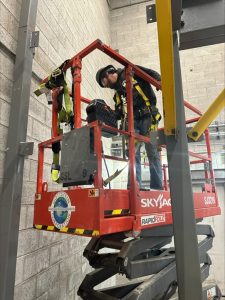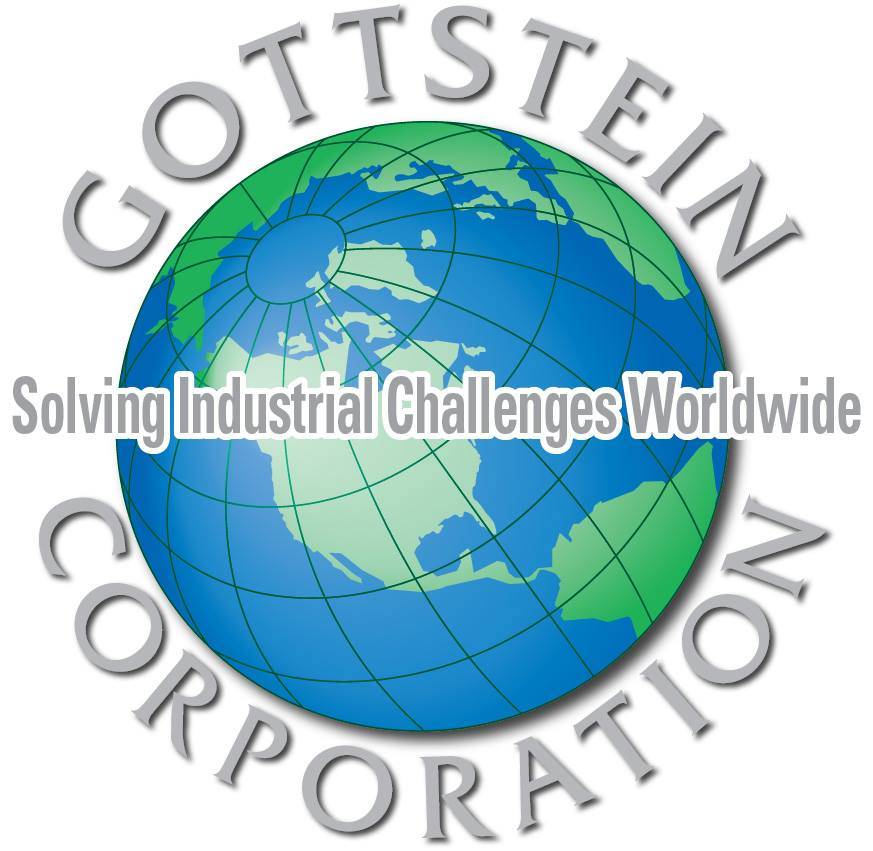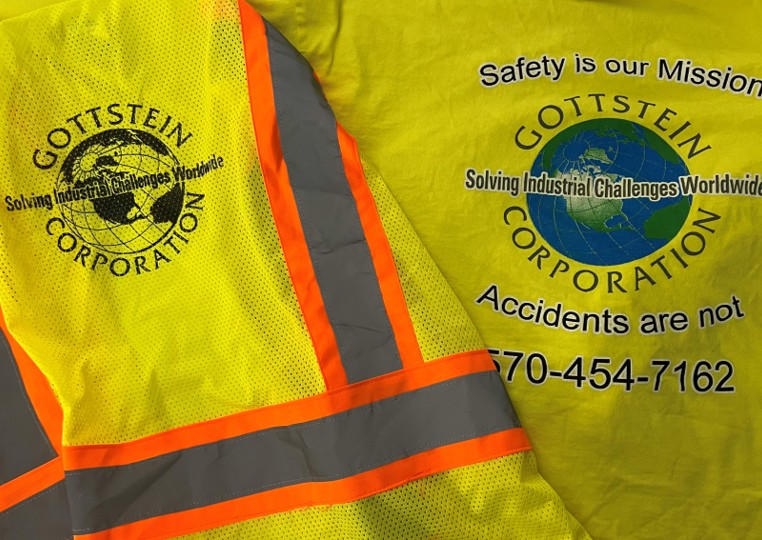Industrial Safety Beyond Compliance: A Strategic Imperative for the Future of Industrial Operations
In today’s industrial landscape, adhering to safety regulations is a fundamental requirement. However, meeting the bare minimum is just the starting point. While compliance with standards like OSHA forms the safety baseline, forward-thinking companies understand that going beyond these minimum requirements is essential. Gottstein Corporation embodies this mindset by continuously enhancing its safety culture and integrating innovative safety solutions that protect employees, increase efficiency, and minimize operational risks.
Why Compliance Is Just the Starting Point
Regulatory requirements are designed to address common hazards and establish minimum safety standards. However, industrial operations are complex and constantly evolving, introducing unique risks that regulations may not fully encompass. Relying solely on compliance creates a reactive safety posture, where incidents are addressed after they occur rather than proactively prevented.
History has shown that accidents can still happen even when regulations are met, highlighting the need for a more comprehensive approach to safety.
For a deeper understanding of compliance, check out the Occupational Safety and Health Administration (OSHA) site.
The Compliance Trap
-
-Compliance sets a bare minimum standard of safety, often reactive rather than proactive.
-
-Emerging technologies like AI-driven automation and IoT introduce risks beyond traditional regulations.
-
-Many historic industrial disasters occurred despite full compliance, revealing significant gaps in safety measures.

Cultivating a Proactive Safety Culture
A culture of safety must be driven from the top down and embedded across every level of the organization. Leadership commitment is crucial—it sets the tone for safety as a core value, not merely a rule. Gottstein Corporation demonstrates this by prioritizing continuous safety training, recognizing safe practices among employees, and fostering an open communication environment where workers feel empowered to report hazards or near-misses without fear.
Key Aspects of a Safety Culture:
-
-Leadership Engagement: Management visibly supports safety initiatives.
-
-Employee Empowerment: Workers can stop work if hazards are found.
-
-Recognition Programs: Celebrating safe behavior reinforces positive habits.
-
-Open Communication: Reporting near misses and hazards without retribution.
For more on building a safety culture, explore the American Society of Safety Professionals (ASSP), which provides best practices on leadership in safety.

Advancing Safety Through Innovation
Technological advancements are transforming safety in industrial manufacturing and fabrication. Automation of high-risk processes reduces human exposure to hazardous tasks, while smart sensors and IoT devices enable real-time monitoring of equipment and environments. These innovations allow for predictive maintenance and the early detection of safety threats before they escalate.
Gottstein Corporation invests in custom-engineered safety solutions, tailoring them to specific project challenges. Examples include specialized pipe supports to prevent mechanical failures or tailored protective equipment for unique job sites. Incorporating data analytics helps identify trends and areas for improvement, transforming safety management into a proactive, adaptive system.
Examples of Safety Innovations:
-
-Automation: Reduces worker exposure to dangerous tasks.
-
-Wearable Safety Tech: Smart helmets and biometric monitors track worker health.
-
-Smart Sensors: Monitor environments for hazards like gas leaks or overheating.
-
-Data Analytics: Predictive maintenance reduces unexpected equipment failure.
For more information on these innovations, visit the National Institute for Occupational Safety and Health (NIOSH).

Continuous Improvement Through Audits and Feedback
To sustain a high safety standard, ongoing evaluation is critical. Gottstein regularly conducts internal audits alongside third-party safety inspections to identify gaps and inefficiencies. More importantly, it gathers employee feedback to improve protocols based on hands-on experience and frontline insight.
This mindset of continuous improvement ensures that safety measures evolve with emerging industry risks, technological innovations, and updated regulations. A dynamic safety system prevents complacency, fosters a learning environment, and keeps the organization ahead of potential hazards.
Continuous Improvement Practices:
-
-Regular safety audits internally and with third-party experts.
-
-Incorporation of employee feedback in procedure updates.
-
-Training refreshers aligned with evolving technology and risks.
-
-Monitoring safety metrics such as Total Recordable Incident Rate (TRIR).
For audit standards, see the ISO 45001 Occupational Health and Safety Management Systems documentation.

Real-World Impact and Business Benefits
Companies that lead in safety culture often experience tangible business advantages. Reduced incident rates lead to fewer disruptions, lower insurance costs, and a reduction in costly downtime. A safe workplace boosts employee morale, engagement, and retention, attracting top talent who prioritize working for responsible employers.
Industry examples show that companies embedding safety deeply into their culture experience operational excellence and financial gains, alongside healthier workplaces.
Some statistics indicate that companies with strong safety cultures can reduce injury rates by up to 40%, while those focusing solely on compliance see minimal improvement.
Industrial safety beyond compliance is not just a regulatory obligation—it’s a strategic imperative for modern industrial operations. By fostering a culture of proactive safety leadership, embracing innovative safety technologies, and committing to continuous learning and improvement, Gottstein Corporation not only protects its employees but also positions itself as a reliable partner in the industrial sector.
This approach elevates safety from a mere legal requirement to a competitive advantage, ensuring safer, more productive, and resilient industrial environments.

